But first, today’s activities. Having failed to take it easy the last two days, and with Len’s cold hanging around, we made a concerted effort today to be quiet(er) and achieved it.
First goal was doing the laundry, to save us having to battle the very basic facilities at our Wakayama hotel as we did on our way here. Len sourced a laundromat in Kushimoto, which turned out to be one of those where they’re happy to do it for you. Consequently, for Y1300, we got one and a half hours of our lives back, which time we spent quietly checking out some of Kushimoto’s sights (besides the Hashigui-iwa Rocks that we’d seen yesterday.)
Cape Shionomisaki
The main reason for going to the Cape – a couple of kilometres south of the town’s centre and the southernmost point of Japan’s main island of Honshu – was to see Shionomisaki Lighthouse. Built in 1873 during the Meiji era, it provided a marker for ships entering Osaka Bay. We didn’t go to the lighthouse itself, but enjoyed looking at it from the grounds at the Cape.
We walked back to the car the long way via a cliff-top path taking us past the RAMSAR designated Kushimoto Coral Communities (not that we saw the actual coral.) This coral site is unique for its high-latitude.
Kii Oshima
Our next stop was Kii Ōshima, a small island lying off Kushimoto and Cape Shionomisaki, and just over a rather beautiful bridge. (The bridge pic is for you, Lisa! Plus, it’s attractive!)
Pan to cafe no mise Nagi
It was morning tea time by now, so we decided to check out the apparently famous Pan to cafe no mise Nagi (which we think translates as something like Nagi’s bread and coffee shop, but Carolyn may enlighten us further). The tourist leaflet said that many people go out of their way to visit it. We’d believe it. For an island of only 2000 inhabitants, this place had a steady stream of customers while we were there. It operates as both bakery (takeaway) and cafe. Their goods are made with Japanese wheat (some of which can have a lower gluten content, so I risked having a taste), homemade yeast, and “the delicious water of Kushimoto”.
It was an absolutely perfect day today – we have been lucky so far, really – so we enjoyed sitting at their outside table, with our cups of coffee (not espresso, which is not so common here) and enjoying the peace. The bread had a very different, chewier texture to normal bread, so maybe the wheat is different. Most Japanese wheat foods use imported wheat, which makes this place a standout.
Kashinozaki Lighthouse, Turkish Museum and Memorial
Thus fortified, we set off to see a couple of the island’s tourist sites – the memorial for the 1890 shipwreck of the Turkish frigate, Ertuğrul, and the Kashinozaki Lighthouse. There is also a Japan-US Friendship Hall. It commemorates the first actual arrival in 1791 of an American ship in Japan – the USS Lady Washington – decades before Commander Perry’s more famous 19th-century landing, but it was off on a different fork in the road and our time was running out.
We also didn’t visit the Turkish Museum that went with the memorial, partly for time reasons, and partly because its displays are apparently only in Japanese and Turkish (funnily enough!) However, I did climb the spiral staircase of the (admittedly) tiny lighthouse. A breeze after yesterday’s efforts. It was designed by the Scottish engineer Richard Henry Brunton who is apparently “the father of Japan’s lighthouses”, and was opened in 1870. It is Japan’s first western-designed lighthouse, and oldest stone lighthouse. And, it is still in use.
None of these were must-sees, but it’s interesting to see the local culture. These memorials and lighthouses are important to the people of Kushimoto – and are being maintained.
By this time, we were late for our laundry pick-up time, so we returned to Kushimoto, picked up our laundry, and were back at our hotel by 1.30 or 2pm, after which we had a quiet afternoon. We did, however, go out later for a paddle in the Pacific Ocean’s Moriura Bay, which our hotel overlooks. The water was pleasantly balmy, and, interestingly, there was no real sea smell.
Wildlife
We don’t see much wildlife in Japan, though we have seen road warning signs featuring an animal we believe is the tanuki or raccoon dog. However, a couple of times during our nocturnal walks to dinner, we have heard and vaguely sighted an animal, which we believe was a deer. An actual daylight sighting in the hotel grounds today pretty much confirmed our assumption.
Dinner
Breakfast was the same as the last three mornings, and was again more than we could eat. We fear we disappoint the staff by not visiting the buffet, but there are limits! Lunch was just snacks, so we decided on an early dinner, and to venture to the neighbouring seaside village of Kii Katsuura. This is the region’s famous tuna fishing port and market, and hence the place for tuna meals. We chose a western-friendly place called Bodai (though many Japanese were eating there) and ordered food izakaya-style, including edamame, sashimi, and the local famous tuna delicacy, toro katsu teishoku. I loved being able to have a glass of wine with my meal, which is not always offered in Japan. When it is, it is usually unidentified. You are mostly offered white wine or red wine, and that’s it. It’s usually OK (and so far, never a riesling!) Beer is another matter. You are given choices galore there!!
Although we are pretty familiar with Japanese dining practices, we did appreciate the server telling us how to eat some of the dishes, regarding the sauces and bowls provided. All told, a delicious meal, in yet another busy, but quiet environment.
Taiji
And now the time really has come to confirm what some of you may have guessed, and that is that the little village of Taiji, where we are based, is that long-standing whaling town, notorious for dolphin-hunting. According to Wikipedia, it “spearheaded the development of more sophisticated whaling techniques in the 17th century. In 1988, a ruling by the International Whaling Commission (IWC) caused Taiji to suspend commercial whaling. However, the town continues to hunt small whales and dolphins. Taiji’s annual dolphin hunt is a subject of controversy and the town faces continued pressure from protest groups.”
Now, I have to admit that I hadn’t realised this when I booked this hotel. I was simply looking for a Japanese-style place in southern Wakayama. In fact, when I booked it, the business address was neighbouring Kushimoto. Even when I realised, pretty quickly, that the hotel was in Taiji, the town name didn’t click – and, unusually for me, I didn’t research it in depth beyond gathering it was a whaling town, because our main reason for coming here was the Kumano Kodo and the mountain culture. My focus was more on how near the location was to our prime goals, not on it itself. It was enough that the hotel had what we wanted. (We discovered that those Kiwi Aussies we met had done the same as us in booking this place, and were a little shocked, too.)
Consequently, it wasn’t until after we got here that the full extent of this particular town’s history finally clicked. Indeed you can’t avoid it. Not only do whale and dolphin motifs abound around town, but we can see the Whale Museum and watch, as we’ve done a couple of times, its dolphin shows (as in SeaWorld-type shows) from our corridor windows. We haven’t gone to the Museum … which, depending on your point of view, was a good or bad decision!
For anyone interested in a contemporary overview for tourists of the town, JapanVisitor.Com‘s page is nicely done. (This is one of the sites we use for our Japan visits. As the page says, very little tourist information around mentions Taiji, or when it does, it’s a passing reference to the Museum.)
And some Stills…
And some Movies…
Click here to view today’s video clips
Today’s Challenges …
- Finally working out why the stop-line at traffic lights is set way back from the intersection: it’s to provide a turning circle (at least we think) for trucks.
- Doing the laundry. Woo hoo! But, it came back in a bag, jumbled and unfolded … except for the two bags we’d brought the laundry in. They were returned very fancily folded (like a serviette/napkin fold!) Grrr …
- Finding the car in the dark carpark at night. It was a little bit of a challenge, but easier once we looked in the right carpark!

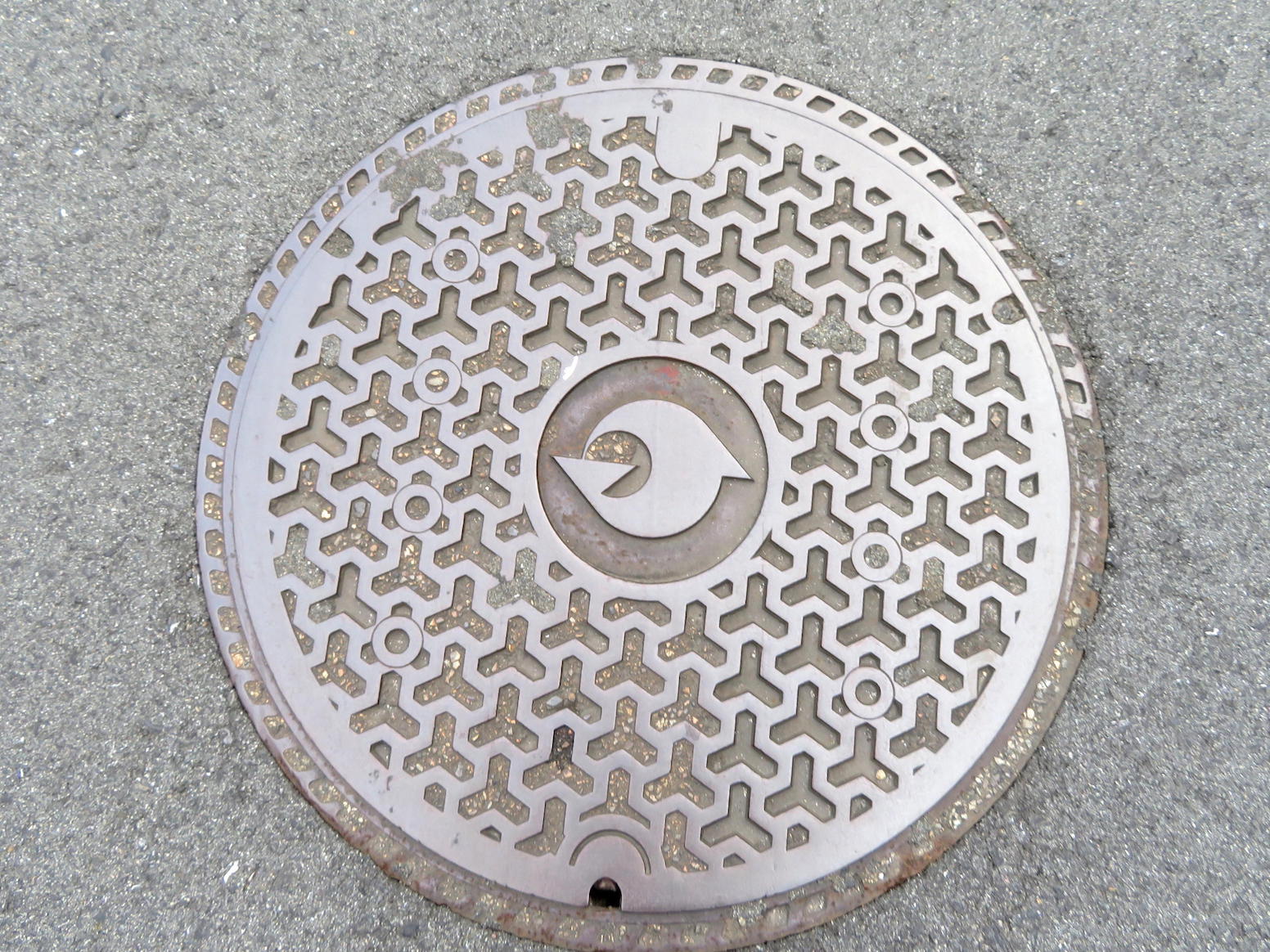



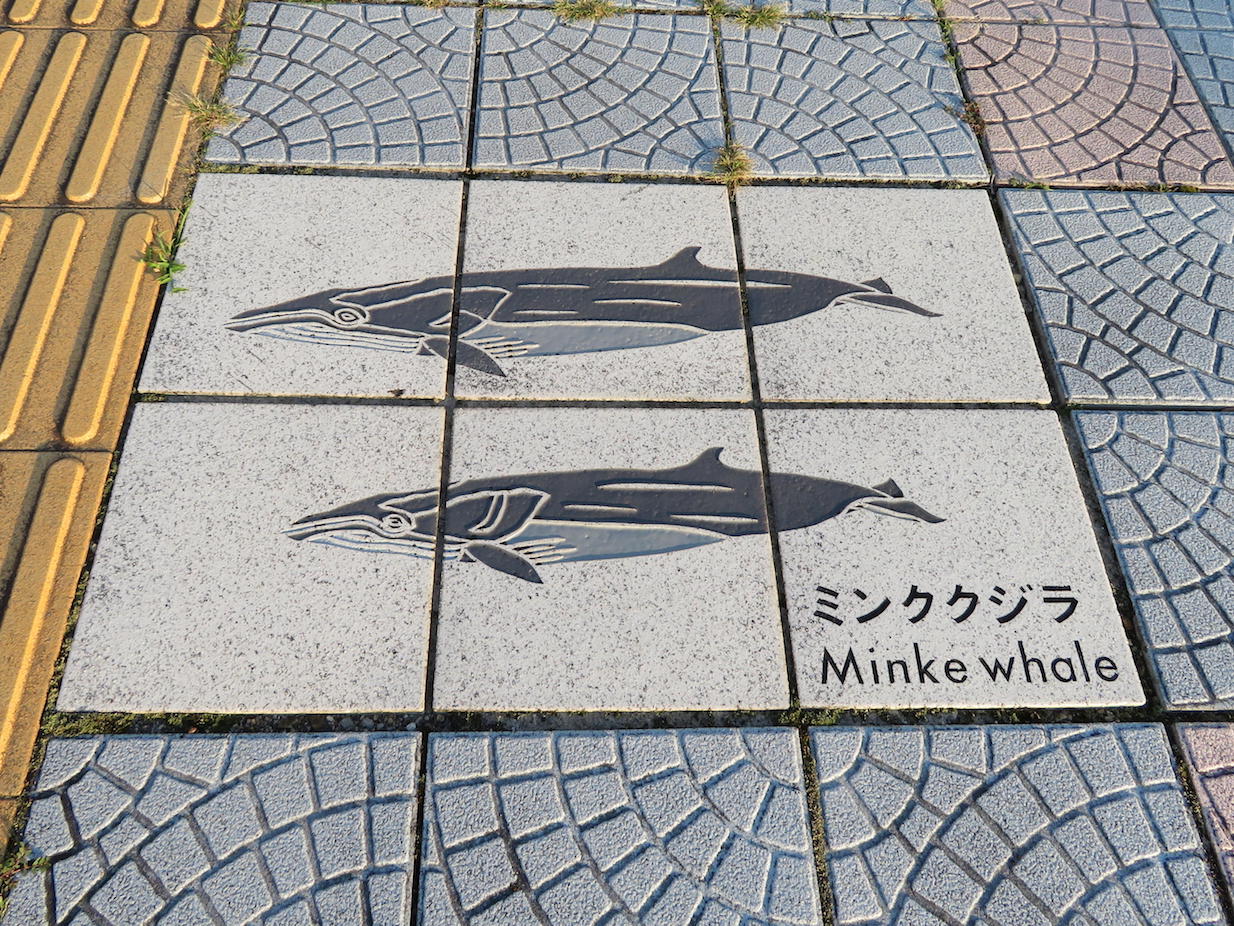

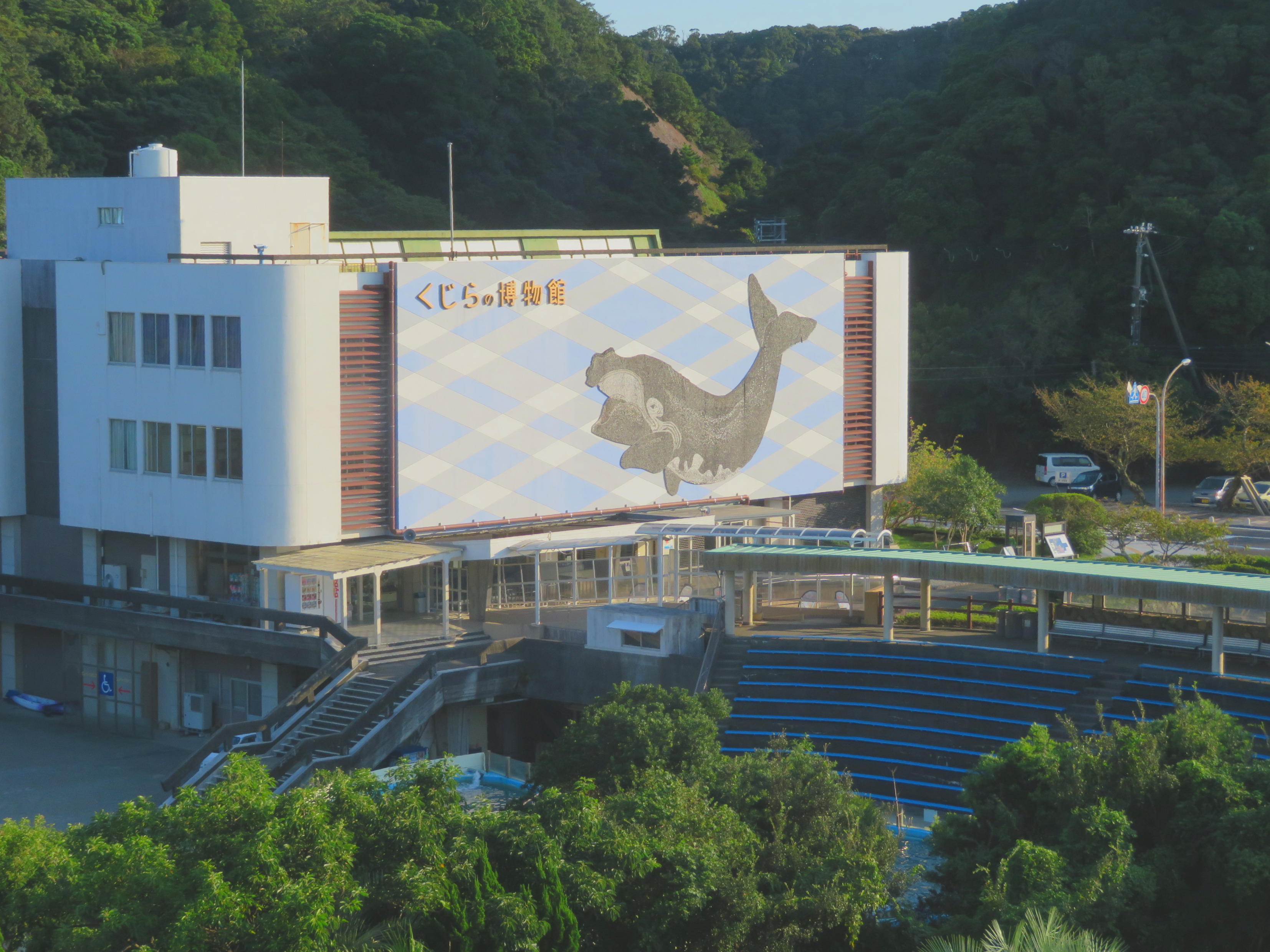






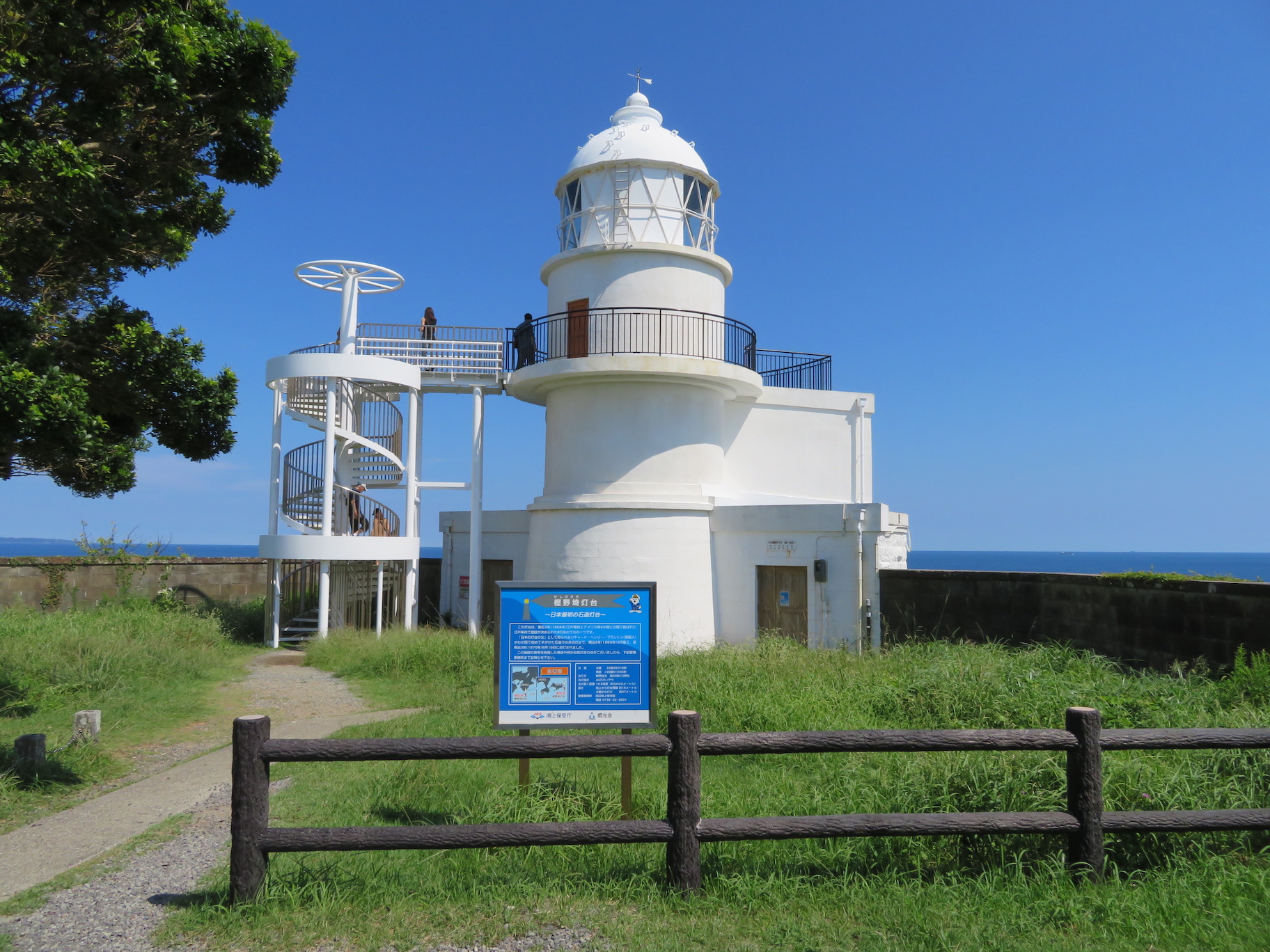
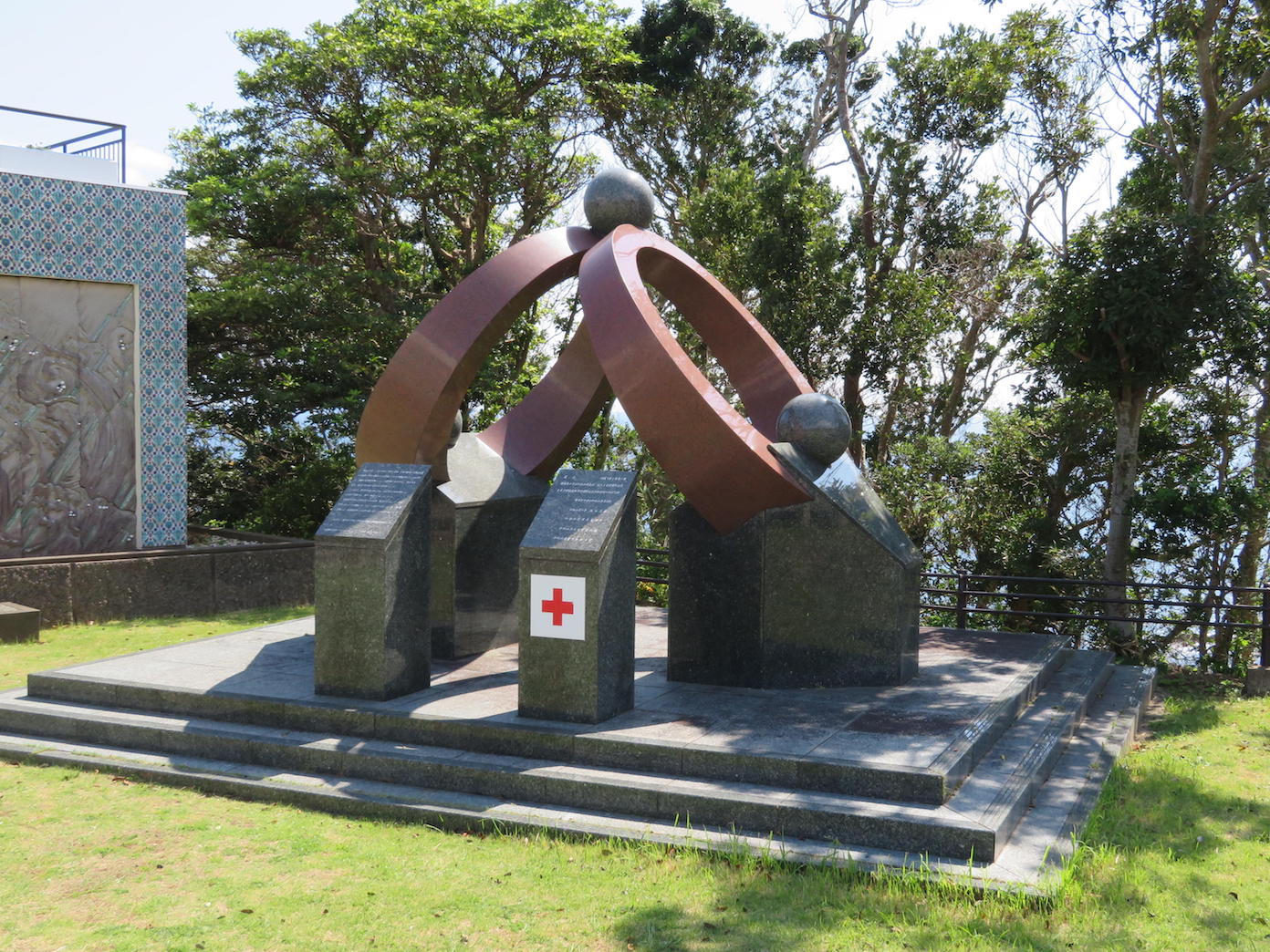

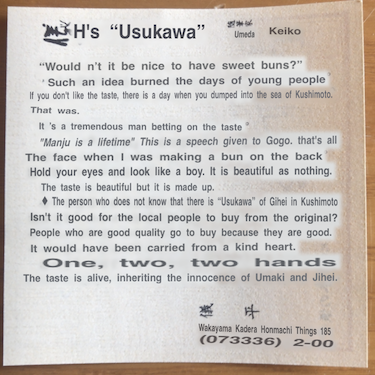
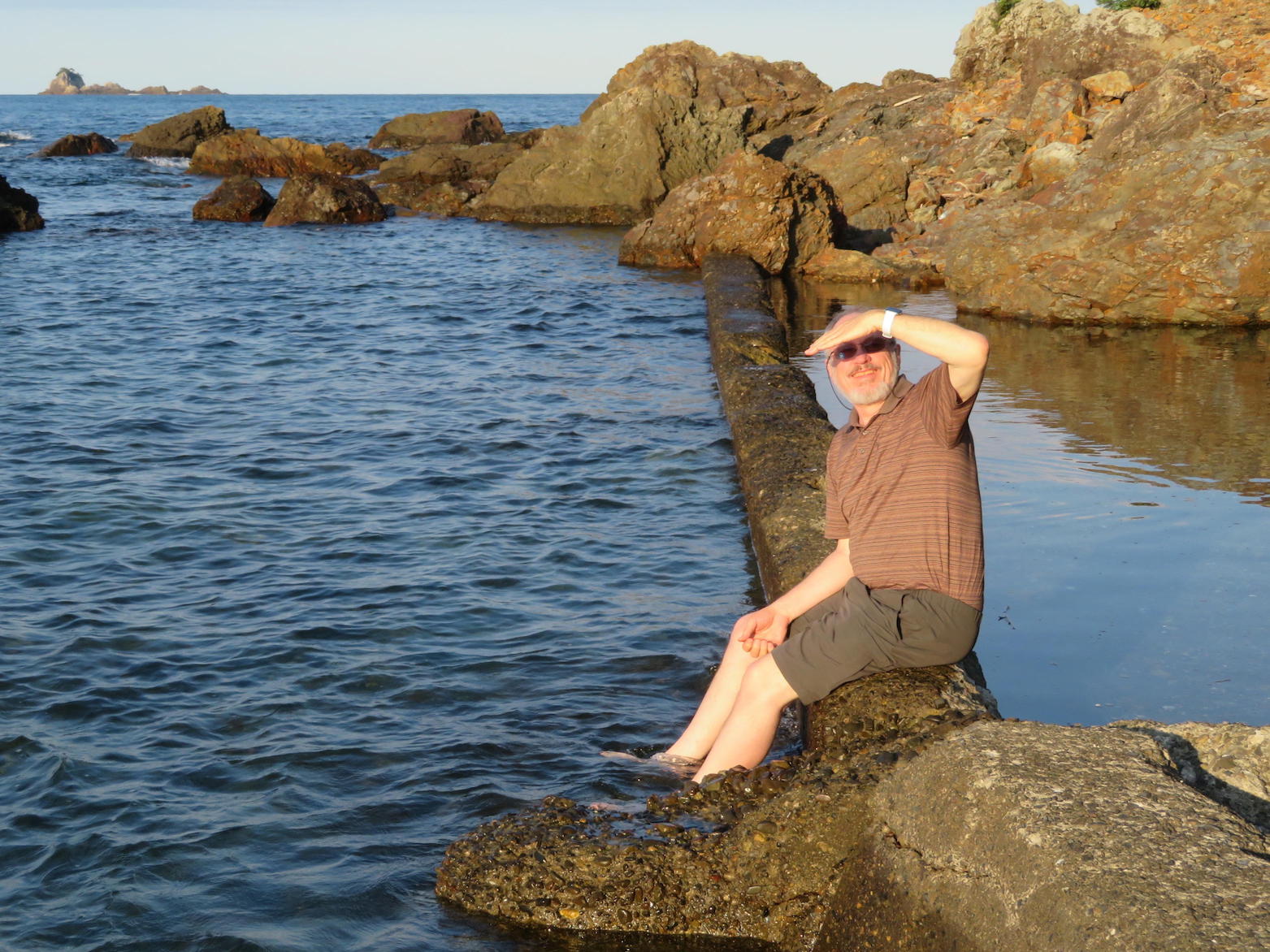

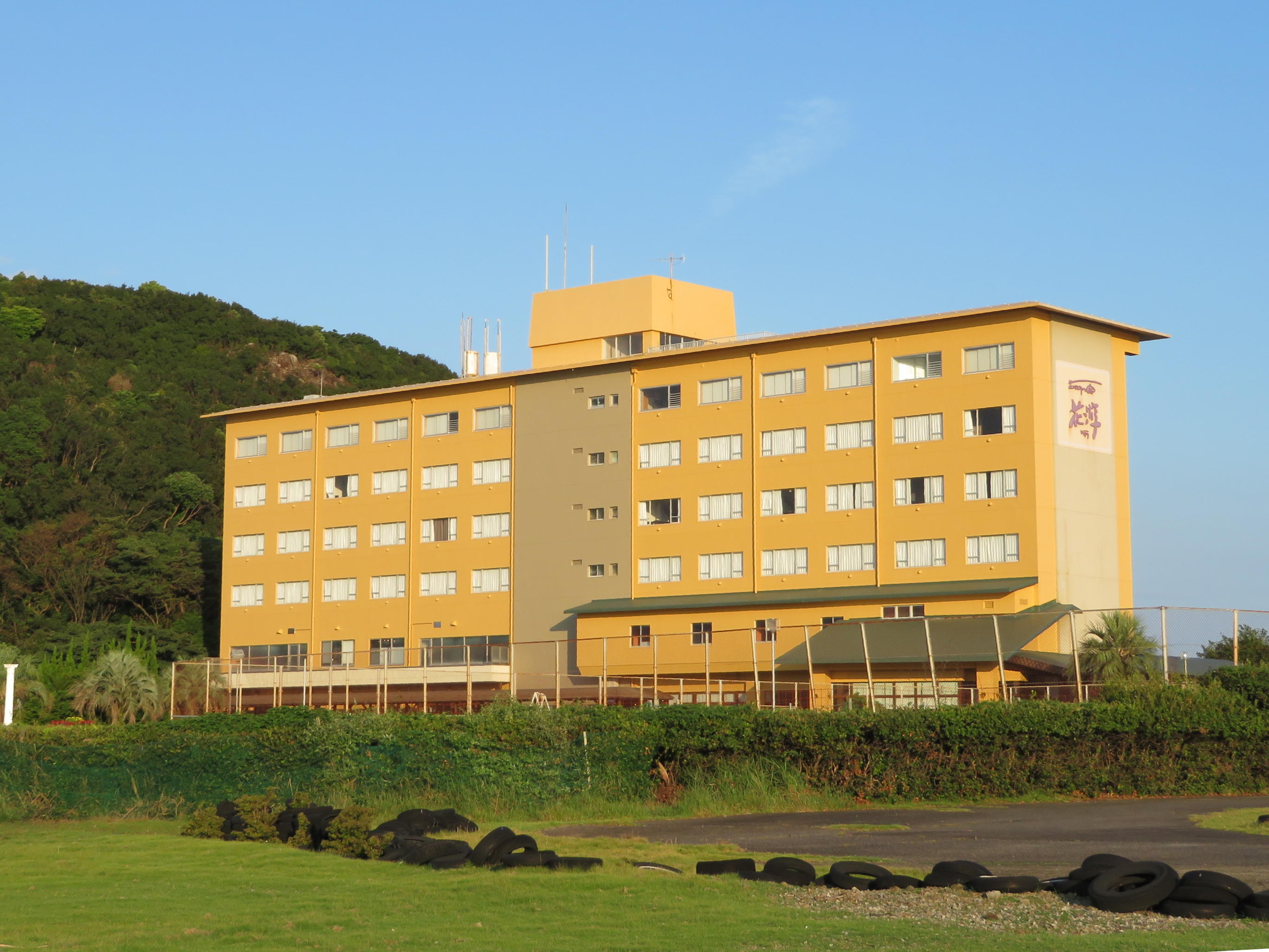


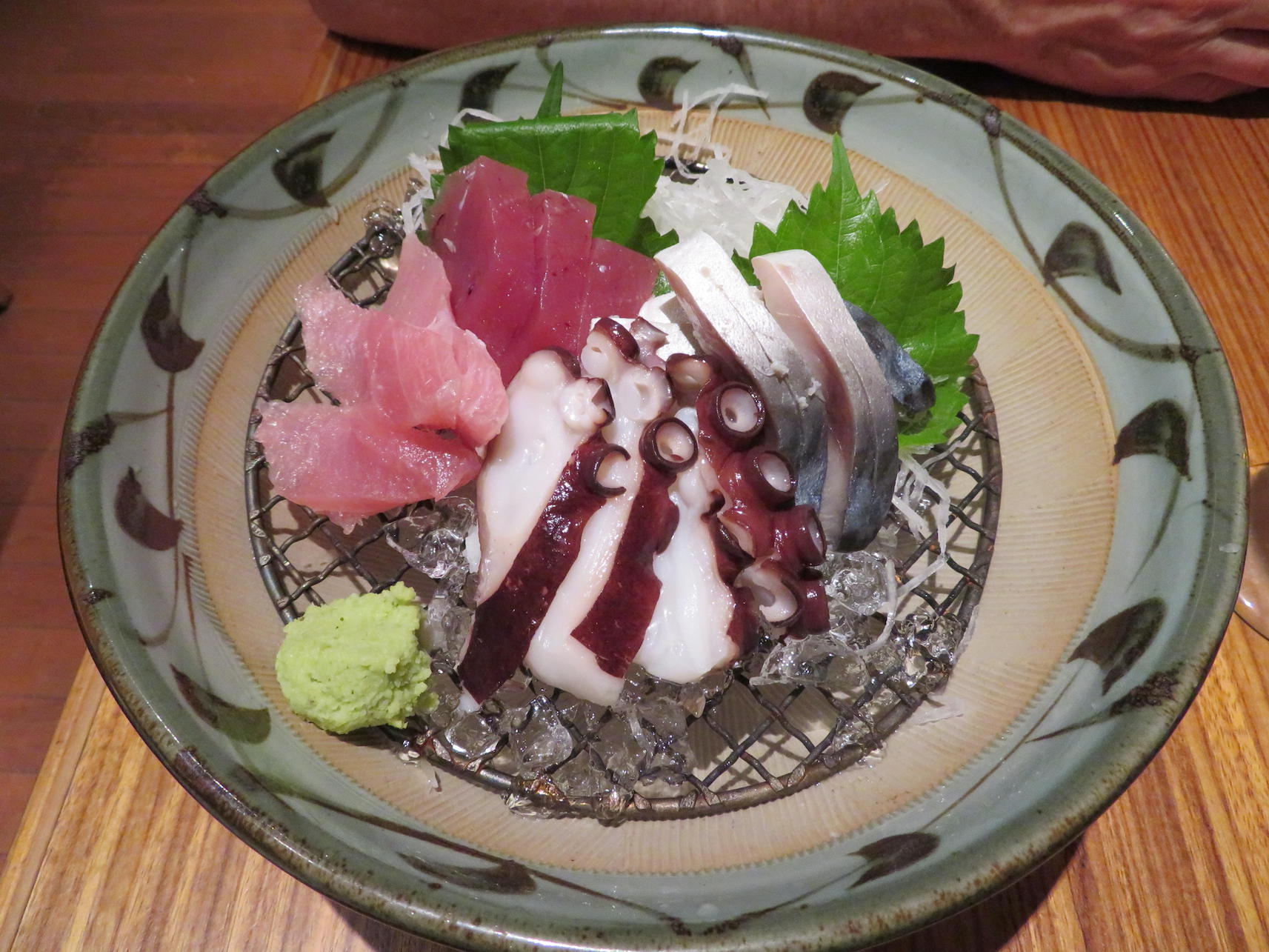
Now I get it – coeliac disease must render part of life difficult. One cannot stay at home eating one’s own food forever.
Those wild deer have a wonderfully comical movement – sort of prancing as if their hooves are hot ! I do like Len saying “Hello, guys !”, and can see the smile as he says it. 🙂
I suppose many Japanese shorelines have rocks that instantly make you think of volcanic movement: how very picturesque they are !
You went ALL THE WAY up the Kashinozaki stairs ?! – musta bin wiped out. [grin]
Haha, M-R, the lighthouse was a challenge but I managed.
Re wheat, no I’m not coeliac, thank goodness. I have chronic eczema which my open-minded GP suggested back in the mid 1980s might be h elped by a food intolerance diet. It changed my life, but it means I have to always be aware of and juggle what I eat, particularly when I travel, because there are many foods I need to avoid or, keep to very moderate levels. Japan for coeliacs would be very difficult. You’d have to love, as I do, sashimi!
Thank you for my bridge picture! But #BeingPicky what I really meant was the little red ones that you see in the ‘Japanese gardens’ here in Australia. They’re always red. Why?
As to whaling…
You know, the reason for all those proud symbols everywhere, it’s to convince visitors that whaling is part of their culture. That’s the argument they’ve trafficked in international forums. But according to The Spouse, who has researched it as part of his work in animal welfare, they only started eating it under General Macarthur because of the post war food shortages.
Whether he’s right or wrong about that is irrelevant IMO. I mean, it was part of our culture to kill animals and people in cruel ways, and we have stopped it. There is *no* humane way to kill a whale, and that tells you something about anyone who wants to eat it.
Haha Lisa, some people are never happy! Seriously though, I guessed you really did mean the garden and park bridges. I’ll definitely find you a non-red one at our favourite garden, probably on Saturday.
Re whales, I understand that the Spouse is essentially right, though I think it was eaten before then. Most Japanese don’t eat it now, I understand. It’s clearly a complex issue, and I try not to be too judgemental given I still eat beef and lamb while Australia engages is live animal export. Not a perfect analogy I know, but it stops me being too holier than thou if you know what I mean. Suffice it to say, we ate no whale. We loved staying in Taiji in many ways, but this whaling business did hang over us, and I wondered which of the people we dealt with approved and which didn’t. The ethics and challenges of travel, eh?
Indeed, there are always compromises when you travel. I was just chatting elsewhere about taking a gondola… it’s analogous to taking a rickshaw ride because they both use human labour to ferry around another human being.
But I have to ‘fess up, when we were in St Petersburg and had spent all day at the Hermitage and were totally, totally exhausted—I know, I know, self-imposed from self-indulgence— we took a modern version of a rickshaw (see https://www.campfirecycling.com/blog/2016/05/23/go-back-to-the-tricycle-my-own-personal-elf-quest). It was pedalled by a very strong and healthy-looking young Russian not like those scrawny old men in Indonesia, but still, if we’d been able to get a taxi, we wouldn’t have…
Haha, M-R, the lighthouse was a challenge but I managed.
Re wheat, no I’m not coeliac, thank goodness. I have chronic eczema which my open-minded GP suggested back in the mid 1980s might be helped by a food intolerance diet. It changed my life, but it means I have to always be aware of and juggle what I eat, particularly when I travel, because there are many foods I need to avoid or, keep to very moderate levels. Japan for coeliacs would be very difficult. You’d have to love, as I do, sashimi!
Are you going anywhere near here?
https://www.abc.net.au/news/2017-06-25/english-surfer-solves-mystery-of-australian-pirate-ship-in-japan/8639906
Interesting, Ian, I’ll research that a little more, but Mugi is southeast Shikoku, and piety much due west of Tanahe City on Honshu where we had coffee today. So close, but we are now heading north and east. We were on Shikoku our last trip, but didn’t go to that part.
I’m loving all of your manhole covers and I was wondering why I never noticed them way back when. Well, it seems that they started to take off in the 80s. I wonder how many lighthouses you’ve visited? I really enjoyed your historical information about the father of lighthouses. Also, I never knew an American ship came so many years before Perry. I’ve heard of whaling ships from various countries running ashore in Japan and of the many Dutch ships down in Nagasaki but not about that ship. Oh yes you were right about the translation of the bread shop’s name. Anyhow, your pictures are beautiful and you commentary the best ever! Oh, and 1300 yen was well worth it for your laundry.
Interesting, Carolyn, about the manhole covers. I started “collecting” them on our first or second (probably the second) trip to Japan when I started noticing them. I’ve put them on flickr where there’s a group dedicated to them. They are fun and interesting aren’t they? I can usually work out their symbolism though some stump me. I still remember some that got away, such as the beautiful colourful hibiscus one in Uno Port. I only got the monochrome one. The colourful one was on the road, we were crossing and it was raining. I hoped to see another, but never did.
Anyhow, I’m so glad you are enjoying what I write and that I’m not sounding too ridiculous or off the planet! I’m glad too that you agree re the laundry.